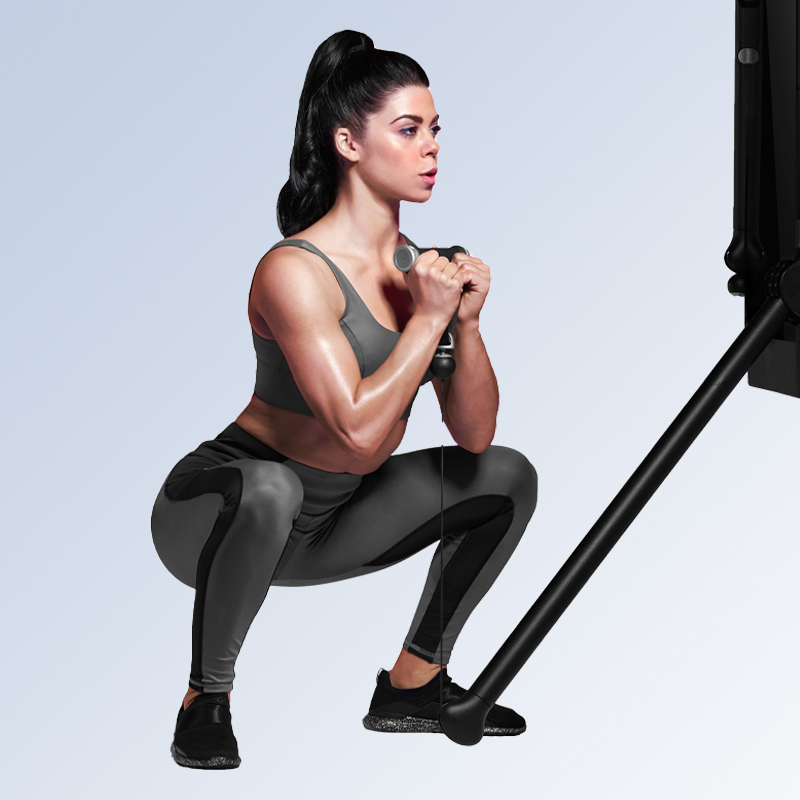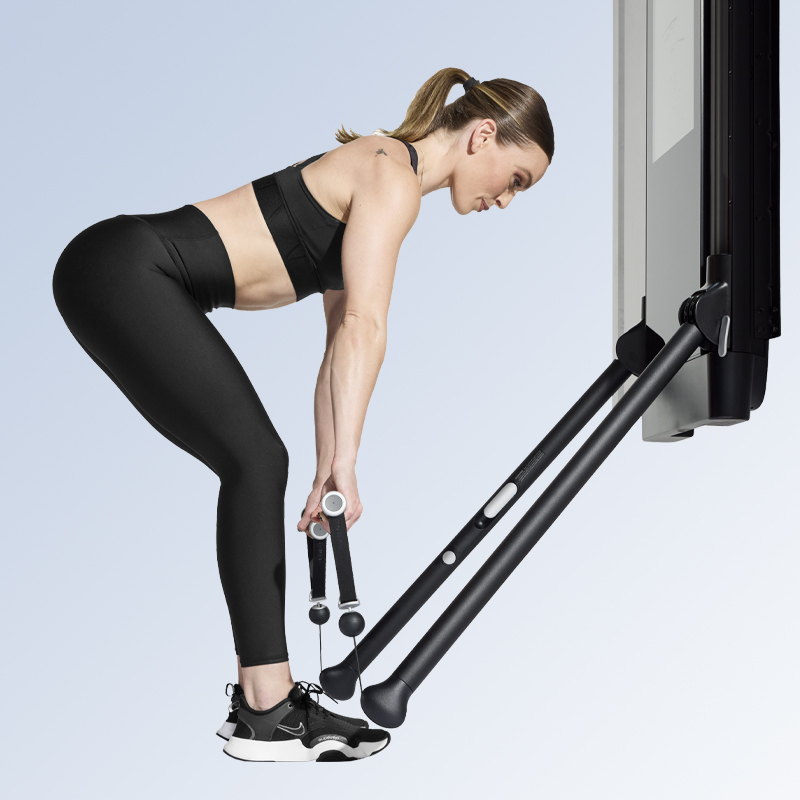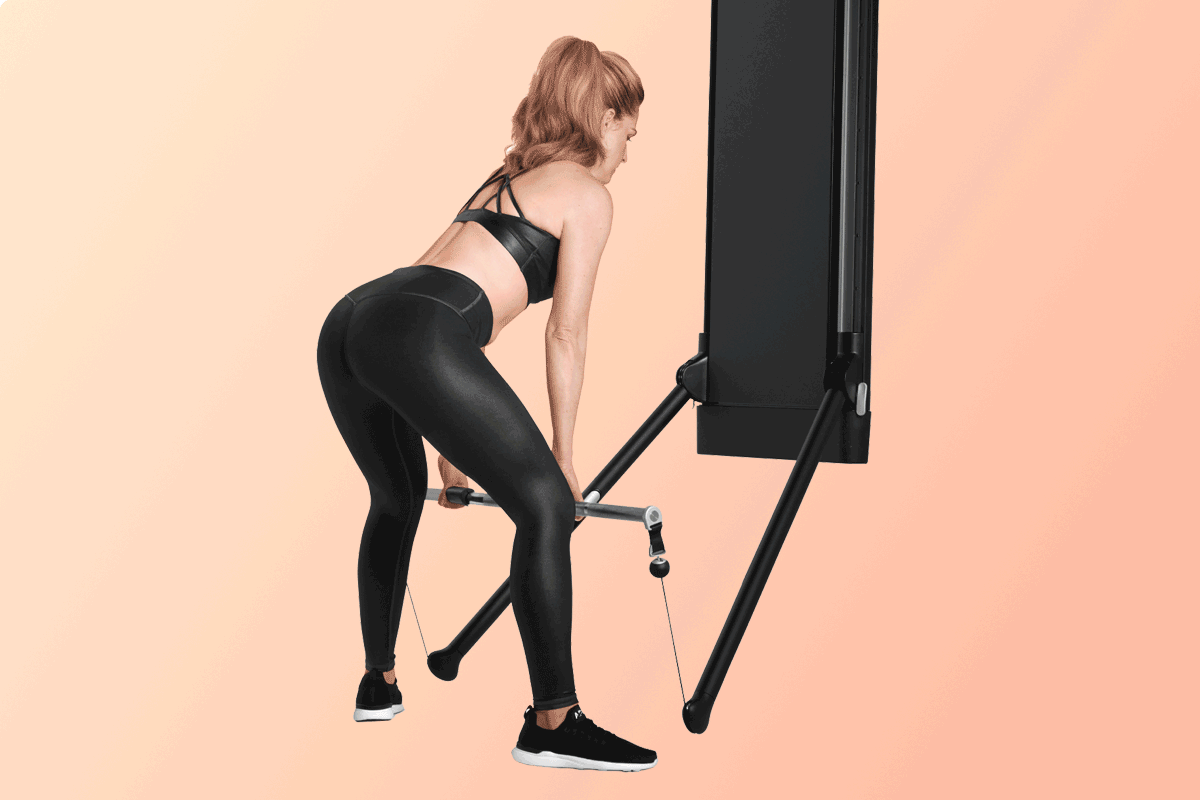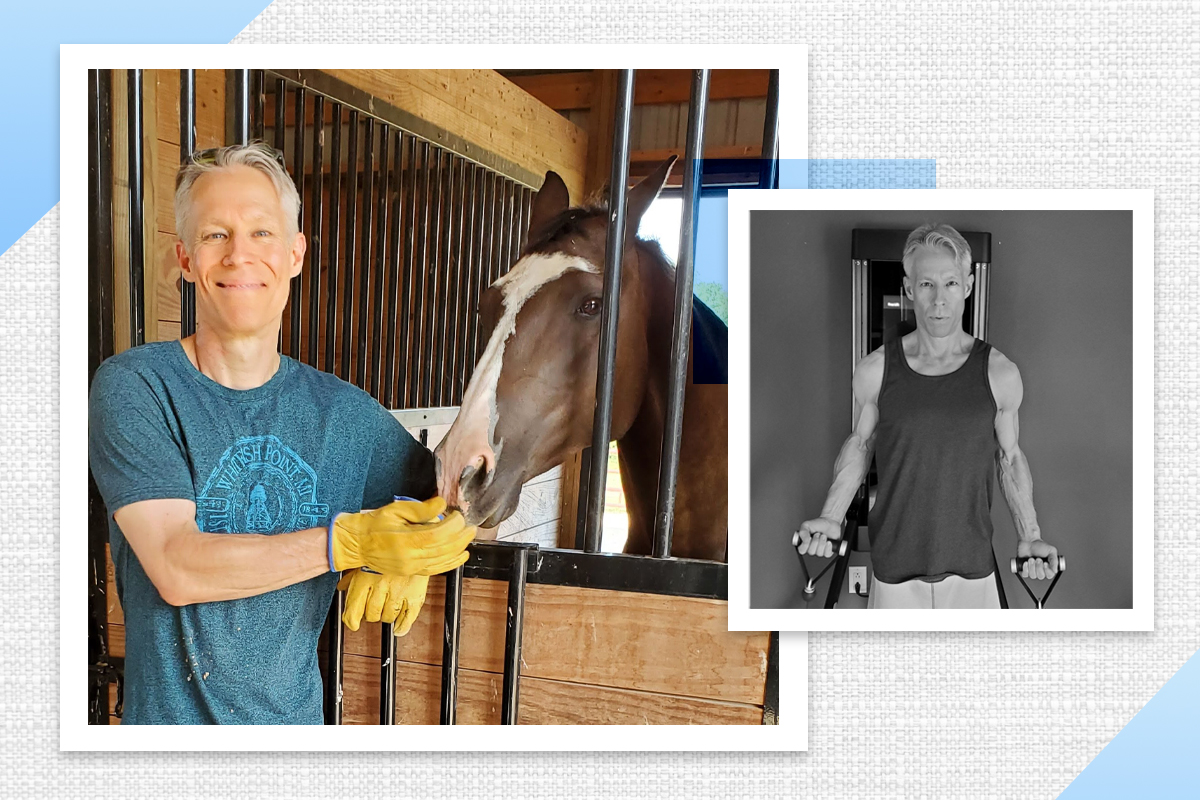Prevent knee pain and injuries by building up the muscles surrounding the joint.

As a lifelong athlete, Tonal Coach Kristina Centenari is no stranger to knee injuries. The certified personal trainer grew up playing tennis competitively and underwent two knee surgeries before graduating college. It wasn’t until years later when she began to study exercise physiology and mobility that she realized knee-strengthening exercises are important for knee-injury prevention.
“If someone can’t access strong muscles in their body, they’ll rely on their joints subconsciously,” explains Centenari. “If muscles aren’t activating, your joints will handle a lot of the load. That can lead to overuse injuries.”
She explains that weak knees and the resulting pain can often be avoided by strengthening the muscles surrounding the knee joint: the hamstrings, quadriceps, and calves. Creating stability around your knees so that they can handle stress will make them more durable whether you’re running, walking, playing a sport, or just moving in daily life.
Exercises for Knee Pain
If you currently have a knee injury, always consult with a doctor to determine the best path forward. If you struggle with knee pain and are cleared by a doctor for exercise, Centenari suggests starting with some more basic knee-strengthening exercises before jumping into strength training.
- Open Up Your Hip Flexors: Sit on your mat and create 90-degree angles with your front and back knees and hips. Bring your hands to the floor on each side of your front thigh. With a straight back, lean forward slightly opening your chest to your thigh. “Spend two minutes here to allow your hips to settle into this more intense internal and external rotation,” says Centenari. “Better range of motion in your hips equals healthier knees.” Repeat on the opposite side.
- Engage Your Calves: Walk backward toe-to-heel to engage your calves for 10-20 steps, depending on the size of your space. Turn around and repeat.
- Test Your Hamstring Strength: Pull your ankle toward your glutes with your hand, as if you’re stretching out your quads, and then release your ankle and see if you can maintain the position without holding on.
- Stretch Out Your Quads: Starting in a half-kneeling position on your mat, reach the arm that’s opposite the front leg up and forward like you’re trying to touch the ceiling. Rotate at your torso and shift your weight forward as you twist toward the front leg. You’ll feel the stretch in the front of the hip and the quads on the back leg.
Knee-Strengthening Exercises
When you’re ready to add resistance, try these knee-strengthening exercises at home to protect your knees from aches and pains.
1. Goblet Squat

Why it Works: If you’re following the outdated advice to avoid bending your knees more than 90 degrees in a squat, Centenari says you might be doing your knees a disservice by not reaching for greater depth.
“You have to expose your knees to a controlled amount of stress in order to handle the stress of everyday life,” she says. “We don’t live life every day with our knees staying at 90 degrees or less so we have to train that fuller knee flexion.”
Squatting past 90 degrees, or below parallel, strengthens the vastus medialis oblique (or VMO), the quadriceps muscle that’s just above the inside of the knee. “The stronger your VMOs, the stronger your knees are going to be,” says Centenari. To safely practice deeper squats, she recommends focusing on bodyweight squats before adding weight.
How to Do it: Hold the handle strap with your thumbs wrapped around the top and position it in front of your chest. Stand with feet shoulder-width apart and toes slightly turned out. Turn the weight on. Send your hips back and bend your knees like you’re sitting into a chair behind you. Push the floor away from you and stand tall, powering the hips toward Tonal.
2. Split Squat

Why it Works: Along with regular deep squats, Centenari says, “Split squats are going to train your knee to be able to handle more stress and more load.” This unilateral move challenges your balance and stability, both of which are essential for strong knees.
How to Do it: Line your arms up with the end of Tonal’s arms. Take a handle in each hand and get into a half-kneeling position with your back knee on the mat, back toes tucked, and your front knee directly over the front ankle. Push the floor away from you to stand tall, keeping the feet in the same position. Lower down until your knee barely touches the floor, then power up to standing.
3. Barbell Hip Thrust

Why it Works: The hamstrings are one of the most important muscles when it comes to knee injury prevention, according to Centenari. She explains that it’s common to be “quad dominant,” or to have stronger quads than hamstrings. This imbalance in the legs can lead to weak knees. She likes the barbell hip thrust because it activates the backs of the legs, where many people lack strength.
How to Do it: Place your shoulders and upper body on the bench as you position the bar on your hips. Bring your ankles under your knees hip-width apart with hips just above the floor. Press the floor away with your feet, squeezing the glutes to lift the hips toward the ceiling. Lower your hips back down toward the floor.
4. Romanian Deadlift

Why it Works: The Romanian deadlift (RDL) is one of Centenari’s favorite exercises for strengthening the posterior chain because it targets the hamstrings even more than conventional deadlifts. The emphasis on the eccentric part of the exercise (or lowering the weight down) forces the hamstrings to engage without help from the quads. “The less knee flexion you have, the more you’re going to focus on lengthening and contracting the hamstrings,” she says.
How to Do It: With feet hip-width apart, toes lined up with the end of Tonal’s arms, take a handle in each hand, and stand tall. With palms facing behind you, slide your hands down your thighs as you send your hips back like someone is pulling you from behind. Squeeze your glutes and power your hips forward to come back up to standing, sliding the handle up the legs.
5. Resisted Lateral Lunge

Why it Works: Along with strengthening the knee in the sagittal plane through front-to-back movements, it’s equally necessary to strengthen the knee in the frontal plane through lateral (side-to-side) movements. These exercises build up the tendons and ligaments in the knee that create stability and prevent injury.
“As adults, we tend to move primarily in the sagittal plane—no more recess equals less free, multi-directional movement—so our stabilizers get weaker in those planes of motion, making us more susceptible to injuries if we slip on ice or trip off a curb,” says Jenna Moore, a certified strength and conditioning coach and Programming Specialist at Tonal. “Including multi-planar movement is important for keeping our bodies resilient.”
If you’re new to strength training or are recovering from a knee injury, try lateral lunges with just your body weight first before adding resistance.
How to Do it: Take the handle in one hand and take a few large steps away from Tonal. Stand sideways so the handle is on the far side of your body with the cable crossing in front of you. Take a wide step toward Tonal and sit back into your inside leg like you’re sitting into a chair while keeping the other leg straight. Press the floor away with your inside leg and return to standing. Repeat on the same side.
The information provided in this article is for educational and informational purposes only. Individuals with pre-existing health conditions, injuries, or concerns should consult with their healthcare provider before trying a new exercise or nutrition regimen.


